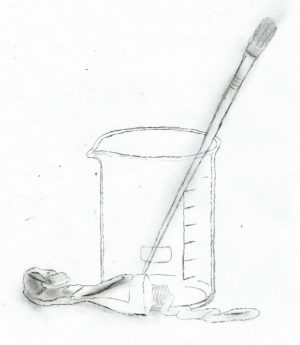Art history fees frustrate students, improve classroom experience
For most science, technology, engineering and math majors, course fees are an unavoidable expense. For every lab, students pay anywhere between $20-200 and engage every week with the materials that their money goes toward. Outside of labs and the fine arts, there are few courses that charge their students a semesterly fee. History, non-lab science, political science and other classes are all free of fees. Why, then, does every art history class cost $20?
To students who have never enrolled in an art history course, the purpose of such fees may not be apparent — art history students do not need specimens to examine or instruments to play. When it comes to art history instruction, however, there is more necessary material than meets the eye.

“The course fee goes towards the buying of books, scanners, and other materials used to create digital image files for our lectures, as well as some of the technology used in our classrooms,” Stephanie Porras, the associate chair of the art history department, said.
These books Porras mentioned include reference works and exhibition catalogs, which provide professors with images of pieces they plan to discuss in class. Some classes require extra funds for rare catalogs or trips to exhibitions where “more funds may be released,” Porras said.
“Generally, these fees are used by the department as a whole, since we all use powerpoints, projectors, and need digital images to teach,” she said.
To non-art history majors who have never spoken to Professor Porras, the fees may seem mysterious, and therefore suspicious. To art history majors like Lindsay Hardy, however, they barely register, and the cost is worth the benefit. Hardy’s art history classes consist largely of analyzing pieces on slides during lecture and taking notes on or discussing them. She believes having access to higher quality images provided by up-to-date technology enhances these classroom experiences.
“I never really noticed them until you asked me about it,” Hardy said. “I think [the technology] helps us see exactly how the work is made because, with art history, it’s much more than just what the subject of the work or the history of the work is.”
Other students, like sophomore public health major Leyla Scheuring, recognize the significance of the cost varies for each student.
“Personally, $20 isn’t going to make or break my ability to pay my tuition. I know that’s not true for everybody,” she said.
Scheuring’s annoyance stems from not knowing what the fee goes towards, rather than the cost itself.
“I’m in photography, too, and that fee is $200 on top of having to provide all of my own supplies, but I know that that fee is going toward maintaining the dark room,” she said.
As for advanced technology enhancing the quality of her class, she says she can find most of the images she discusses in class in her textbook. Scheuring also says, however, that “it might be different if I was an art history major.”
Your donation will support the student journalists of Tulane University. Your contribution will allow us to purchase equipment and cover our annual website hosting costs.



